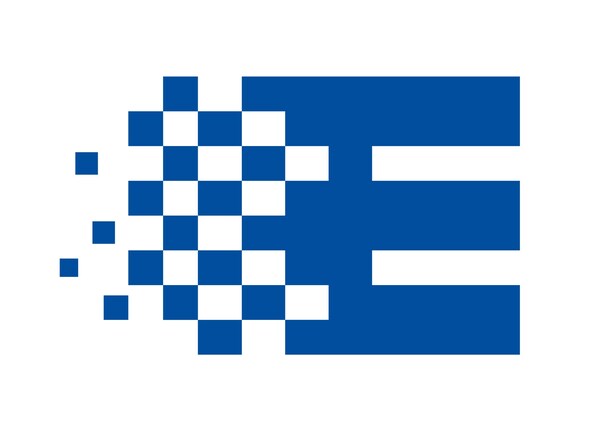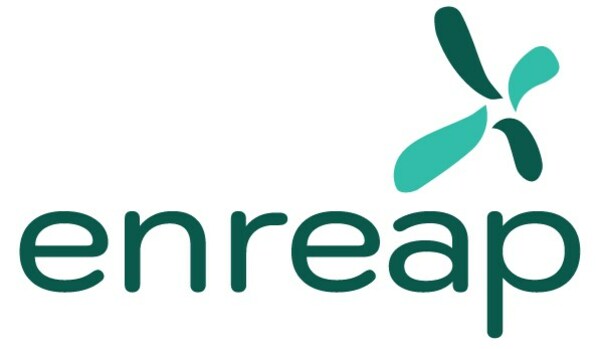New Data at ASH 2021 Reinforces the Strength of Servier's Hematology Portfolio

First Phase 3 results from the AGILE trial in patients with newly diagnosed acute myeloid leukemia with an IDH1 mutation show improved event-free survival and various secondary outcomes,including complete remission,overall survival and objective response rate,with ivosidenib tablets (TIBSOVO®) in combination with azacitidine compared to azacitidine plus placebo
Updated survival and response results from Phase 1 study of ivosidenib or enasidenib in combination with standard induction and consolidation chemotherapy in patients with newly diagnosed acute myeloid leukemia with an IDH1 or IDH2 mutation
PARIS and BOSTON,Nov. 5,2021 --Servier,a growing leader in oncology committed to bringing the promise of tomorrow to the patients we serve,todayannounced new data in acute myeloid leukemia (AML) to be presented at the 63rd Annual Meeting of the American Society of Hematology (ASH) taking place December 11 – 14,2021.
"Our growing oncology portfolio is designed to tackle hard-to-treat cancers and deliver new therapies for patients in need," said David K. Lee,Chief Executive Officer of ServierPharmaceuticals. "At this year's ASH meeting,we are proud to present new data demonstrating significant clinical outcomes for patients living with AML."
"We look forward to sharing our findings with the medical community around the world,leveraging our leadership in oncology to strengthen our commitment to patients with hematological malignancies," said Claude Bertrand,Executive Vice President,R&D,Servier Group.
Servier abstracts being presented at ASH include:
Abstract Title
Lead Author
Presentation Type/#
Session Title
Session Date/Time
Acute Myeloid Leukemia
AGILE: A Global,Randomized,Double-Blind,Phase 3 Study
of Ivosidenib + Azacitidine Versus Placebo + Azacitidine in
Patients with Newly Diagnosed Acute Myeloid Leukemia
Pau Montesinos,M.D.,Ph.D.,et. al.
Oral
Abstract #697
616. Acute Myeloid Leukemias:
Investigational Therapies,Excluding
Transplantation and Cellular
Immunotherapies: Targeted Therapies
and Novel Therapies
Monday,December 13,2021
at 2:45 -4:15PM
Updated Survival and Response Analyses from a Phase 1
Study of Ivosidenib or Enasidenib Combined with Induction
and Consolidation Chemotherapy in Patients with Newly
Diagnosed AML with an IDH1 or IDH2 Mutation
Eytan M. Stein,M.D,et. al.
Poster
Abstract #1276
616. Acute Myeloid Leukemias:
Investigational Therapies,
Excluding Transplantation and Cellular
Immunotherapies: Poster I
Saturday,December 11,2021
at 5:30 -7:30PM
Acute Lymphoblastic Leukemia
Safety and Pharmacokinetics of Calaspargase Pegol in
Adults with Newly Diagnosed Philadelphia-Negative ALL: A Phase
2/3 Study
Wendy Stock,et. al.
Abstract Only
N/A
N/A
About NCT03173248 AGILE Phase 3 AML Trial
The AGILE trial is a global,Phase 3,multicenter,double-blind,randomized,placebo-controlled clinical trial designed to evaluate the efficacy and safety ofTIBSOVO in combination with azacitidine compared with placebo in combination with azacitidine,in patients with newly diagnosed IDH1 mutant AML who are not candidates for intensive chemotherapy. The study's primary endpoint is EFS,defined as the time from randomization until treatment failure,relapse from remission,or death from any cause,whichever occurs first. Treatment failure is defined as failure to achieve complete remission (CR) by Week 24.
Other key secondary endpoints included complete remission rate (CR rate),defined as the proportion of participants who achieve a CR; overall survival (OS),defined as the time from date of randomization to the date of death due to any cause; CR and complete remission with partial hematologic recovery (CRh) rate,defined as the proportion of participants who achieve a CR or CRh; and objective response rate (ORR),defined as the rate of CR,CR with incomplete hematologic recovery (CRi) (including CR with incomplete platelet recovery [CRp]),partial remission (PR),and morphologic leukemia-free state (MLFS).
About NCT02632708 Phase 1 AML Trial
The NCT02632708 is a U.S.,Phase 1 multicenter,clinical trial designed to evaluate the safety of ivosidenib (AG-120) or enasidenib (AG-221) when given in combination with standard AML induction and consolidation therapy. The study plans to evaluate up to 2 dose levels of AG-120 in participants with an isocitrate dehydrogenase protein 1 (IDH1) mutation and up to 2 dose levels of AG-221 in participants with an isocitrate dehydrogenase protein 2 (IDH2) mutation. AG-120 or AG-221 will be administered with 2 types of AML induction therapies (cytarabine with either daunorubicin or idarubicin) and 2 types of AML consolidation therapies (mitoxantrone with etoposide [ME] or cytarabine). After consolidation therapy,participants may continue on to maintenance therapy and receive daily treatment with single-agent AG-120 or AG-221 until relapse,development of an unacceptable toxicity,or hematopoietic stem cell transplant (HSCT). The study will end when all participants have discontinued study treatment. The primary endpoints are the percentage of participants with adverse events (AEs).
Other key secondary endpoints include recommended phase 2 dose when administered with induction and consolidation therapy; pharmacokinetics of AG-120 and AG-221 in plasma when administered with induction and consolidation therapy; 2-hydroxyglutarate (2-HG) Levels in Plasma; and Clinical Activity of AG-120 and AG-221 According to the 2003 Revised International Working Group (IWG) Criteria for AML.
About NCT04817761 Phase 2/3 ALL Trial
The NCT04817761 is a U.S.,Phase 2/3 multi-center,open-label,single-arm clinical trial to confirm the recommended doses and to evaluate the safety and pharmacokinetics of calaspargase pegol for treatment of adults aged 22 to >65 years with newly-diagnosed Philadelphia-negative acute lymphoblastic leukemia (ALL). The study's primary endpoint is adverse events (AEs) (Part 1) 30 days after administration at days 4,5 and 6 in the remission induction phase,AEs (Part 2) 30 days after the last dose of the study drug in delayed intensification phase,plasma asparaginase activity (PAA) (Part 1) days 4,5 and 6 for PAA samples,and nadir plasma asparaginase activity (NPAA) (Part 2).
Other key secondary endpoints include PAA level ≥0.1 U/mL at any time during remission induction phase and post-remission induction phase; PAA level ≥0.025,≥0.1,≥0.2,or ≥0.4 U/mL at predefined time points during remission induction phase and post-remission induction phase; PAA-derived maximum concentration (Cmax) after the remission induction phase day 4 dose; PAA-derived area under the PAA-time curve from time 0 to day 21 (AUC 0-21) after the remission induction phase day 4 dose (Part 1 and 2); minimal residual disease (MRD); complete remission (CR); survival,event-free survival (EFS),disease-free survival (DFS) and overall survival (OS),2-year EFS,DFS,OS,3-year EFS,OS; anti-drug (calaspargase pegol) antibody (ADA) development (Part 1 and 2).
About Acute Myeloid Leukemia
Acute myeloid leukemia (AML) is a cancer of the blood and bone marrow marked by rapid disease progression and is the most common acute leukemia affecting adults with approximately 20,000 new cases in the U.S.,and 43,000 cases in Europe each year.The majority of patients with AML eventually relapse. Relapsed or refractory AML has a poor prognosis.The five-year survival rate is approximately 27%.For 6% to 10% of AML patients,the mutated IDH1 enzyme blocks normal blood stem cell differentiation,contributing to the genesis of acute leukemia.
About Acute Lymphoblastic Leukemia
Acute lymphoblastic leukemia (ALL) is the most common form of childhood acute leukemia. It is a rapidly progressing cancer that starts in the bone marrow and spreads into the blood,where it can cause problems elsewhere in the body,such as in the spleen,thymus,lymph nodes,liver,testicles,and the central nervous system. ALL represents approximately 12% of all leukemia cases worldwide,and about 80% of childhood leukemia cases. The five-year survival rate for children with ALL is now about 90%.
About Servier Pharmaceuticals
Servier Pharmaceuticals,LLC is a commercial-stage company with a passion for innovation and improving the lives of patients,their families and caregivers. A privately held company,Servier has the unique freedom to devote its time and energy toward putting those who require our treatment and care first,with future growth driven by innovation in areas of unmet medical need.
As a growing leader in oncology,Servier is committed to finding solutions that will address today's challenges. The company's oncology portfolio of innovative medicines is designed to bring more life-saving treatments to a greater number of patients,across the entire spectrum of disease and in a variety of tumor types.
Servier believes co-creation is fundamental to driving innovation and is actively building alliances,acquisitions,licensing deals and partnerships that bring solutions and accelerate access to therapies. With our commercial expertise,global reach,scientific expertise and commitment to clinical excellence,Servier Pharmaceuticals is dedicated to bringing the promise of tomorrow to the patients that we serve.
More information: www.servier.us
Follow us on social media:LinkedIn,Twitter
About Servier Group
Servier is a global pharmaceutical group governed by a Foundation. With a strong international presence in 150 countries and a total revenue of 4.7 billion euros in 2020,Servier employs 22,500 people worldwide. Servier is an independent group that invests over 20% of its brand-name revenue in Research and Development every year. To accelerate therapeutic innovation for the benefit of patients,the Group is committed to open and collaborative innovation with academic partners,pharmaceutical groups,and biotech companies. It also integrates the patient's voice at the heart of its activities.
A leader in cardiology,the ambition of the Servier Group is to become a recognized and innovative player in oncology. Its growth is based on a sustained commitment to cardiovascular and metabolic diseases,oncology,neuroscienceand immuno-inflammatory diseases. To promote access to healthcare for all,the Servier Group also offers a range of quality generic drugs covering most pathologies.
More information:www.servier.comFollow us on social media:LinkedIn,Facebook,Twitter
*Servier entered into an exclusive collaboration and license agreement with CStone for the development and commercialization of TIBSOVO (ivosidenib tablets) in Mainland China,Taiwan,Hong Kong,Macau and Singapore.
Press Contacts
Servier Group (France and worldwide)
Sonia Marques
presse@servier.com
+33 (0)1 55 72 40 21 / + 33 (0)7 84 28 76 13
Servier Pharmaceuticals (U.S.)
Megan Talon
megan.talon@servier.com
Disclosures
This release contains general information about the Servier Group and its entities (hereinafter "Servier and its Affiliates") and is intended for informational purposes only. The information is thought to be reliable; however,Servier and its Affiliates make no representation as to the accuracy or completeness of the information contained herein or otherwise provided and accept no responsibility or liability,in contract,in tort,in negligence,or otherwise,should the information be found to be inaccurate or incomplete in any respect.
Servier and its Affiliates are not acting as an advisor to the recipient of this information,and the ultimate decision to proceed with any transaction rests solely with the recipient of this information. Therefore,prior to entering into any proposed transaction,the recipient of this information should determine,without reliance upon Servier or its Affiliates,the economic risks and merits,as well as the legal,tax,and accounting characterizations and consequences,of the transaction and that it is able to assume these risks.
This statement also contains forward-looking statements that are subject to varying levels of uncertainty and risk. Investigational new drugs and indications are subject to further scientific and medical review and regulatory approval. They are not approved for use by the FDA.
Any reliance placed on this document is done entirely at the risk of the person placing such reliance. The information contained in this document is neither an offer to sell nor the solicitation of an offer to enter into a transaction.
The content of this document is a summary only,is not complete,and does not include all material information about Servier and its Affiliates,including potential conflicts of interest.
To the maximum extent permitted by applicable laws and regulations,Servier and its Affiliates disclaim all representations,warranties,conditions and guarantees,whether express,implied,statutory or of other kind,nor does it accept any duty to any person,in connection with this document. Without prejudice to the generality of the foregoing,Servier and its Affiliates do not warrant or represent that the information or opinions contained in this document is accurate or complete.
To the maximum extent permitted by applicable laws and regulations,Servier and its Affiliates shall not be liable for any loss,damage or expense whatsoever,whether direct or indirect,howsoever arising,whether in contract,tort (including negligence),strict liability or otherwise,for direct,indirect,incidental,consequential,punitive or special damages arising out of or in connection with this document,including (without limitation) any course of action taken on the basis of the same.
The estimates,strategies,and views expressed in this document are based upon past or current data and information and are subject to change without notice.
About TIBSOVO®(ivosidenib tablets)
TIBSOVO is an isocitrate dehydrogenase-1 (IDH1) inhibitor indicated for the treatment of adult patients with a susceptible IDH1 mutation as detected by an FDA-approved test with:
Acute Myeloid Leukemia (AML)
Newly-diagnosed AML who are ≥ 75 years old or who have comorbidities that preclude use of intensive induction chemotherapy.
Relapsed or refractory AML.
Locally Advanced or Metastatic Cholangiocarcinoma
Locally advanced or metastatic cholangiocarcinoma who have been previously treated.
IMPORTANT SAFETY INFORMATION
WARNING: DIFFERENTIATION SYNDROME IN AML
Patients treated with TIBSOVO have experienced symptoms of differentiation syndrome,which can be fatal if not treated. Symptoms may include fever,dyspnea,hypoxia,pulmonary infiltrates,pleural or pericardial effusions,rapid weight gain or peripheral edema,hypotension,and hepatic,renal,or multi–organ dysfunction. If differentiation syndrome is suspected,initiate corticosteroid therapy and hemodynamic monitoring until symptom resolution.
WARNINGS AND PRECAUTIONS
Differentiation Syndrome in AML: In the clinical trial,25% (7/28) of patients with newly diagnosed AML and 19% (34/179) of patients with relapsed or refractory AML treated with TIBSOVO experienced differentiation syndrome. Differentiation syndrome is associated with rapid proliferation and differentiation of myeloid cells and may be life-threatening or fatal if not treated. Symptoms of differentiation syndrome in patients treated with TIBSOVO included noninfectious leukocytosis,peripheral edema,pyrexia,pleural effusion,pulmonary edema,pneumonitis,pericardial effusion,rash,fluid overload,tumor lysis syndrome,and creatinine increased. Of the 7 patients with newly diagnosed AML who experienced differentiation syndrome,6 (86%) patients recovered. Of the 34 patients with relapsed or refractory AML who experienced differentiation syndrome,27 (79%) patients recovered after treatment or after dose interruption of TIBSOVO. Differentiation syndrome occurred as early as 1 day and up to 3 months after TIBSOVO initiation and has been observed with or without concomitant leukocytosis.
If differentiation syndrome is suspected,initiate dexamethasone 10 mg IV every 12 hours (or an equivalent dose of an alternative oral or IV corticosteroid) and hemodynamic monitoring until improvement. If concomitant noninfectious leukocytosis is observed,initiate treatment with hydroxyurea or leukapheresis,as clinically indicated. Taper corticosteroids and hydroxyurea after resolution of symptoms and administer corticosteroids for a minimum of 3 days. Symptoms of differentiation syndrome may recur with premature discontinuation of corticosteroid and/or hydroxyurea treatment. If severe signs and/or symptoms persist for more than 48 hours after initiation of corticosteroids,interrupt TIBSOVO until signs and symptoms are no longer severe.
QTc Interval Prolongation:Patients treated with TIBSOVO can develop QT (QTc) prolongation and ventricular arrhythmias. Concomitant use of TIBSOVO with drugs known to prolong the QTc interval (e.g.,anti-arrhythmic medicines,fluoroquinolones,triazole anti–fungals,5–HT3receptor antagonists) and CYP3A4 inhibitors may increase the risk of QTc interval prolongation. Conduct monitoring of electrocardiograms (ECGs) and electrolytes. In patients with congenital long QTc syndrome,congestive heart failure,or electrolyte abnormalities,or in those who are taking medications known to prolong the QTc interval,more frequent monitoring may be necessary.
Interrupt TIBSOVO if QTc increases to greater than 480 msec and less than 500 msec. Interrupt and reduce TIBSOVO if QTc increases to greater than 500 msec. Permanently discontinue TIBSOVO in patients who develop QTc interval prolongation with signs or symptoms of life-threatening arrhythmia.
Guillain-Barré Syndrome:Guillain-Barré syndrome can develop in patients treated with TIBSOVO. Monitor patients taking TIBSOVO for onset of new signs or symptoms of motor and/or sensory neuropathy such as unilateral or bilateral weakness,sensory alterations,paresthesias,or difficulty breathing. Permanently discontinue TIBSOVO in patients who are diagnosed with Guillain-Barré syndrome.
ADVERSE REACTIONS
In patients with AML, the most common adverse reactions including laboratory abnormalities (≥20%) were hemoglobin decreased (60%),fatigue (43%),arthralgia (39%),calcium decreased (39%),sodium decreased (39%),leukocytosis (38%),diarrhea (37%),magnesium decreased (36%),edema (34%),nausea (33%),dyspnea (32%),uric acid increased (32%),potassium decreased (32%),alkaline phosphatase increased (30%),mucositis (28%),aspartate aminotransferase increased (27%),phosphatase decreased (25%),electrocardiogram QT prolonged (24%),rash (24%),creatinine increased (24%),cough (23%),decreased appetite (22%),myalgia (21%),constipation (20%),and pyrexia (20%).
In patients with newly diagnosed AML, the most frequently reported Grade ≥3 adverse reactions (≥5%) were fatigue (14%),differentiation syndrome (11%),electrocardiogram QT prolonged (11%),diarrhea (7%),nausea (7%),and leukocytosis (7%). Serious adverse reactions (≥5%) were differentiation syndrome (18%),electrocardiogram QT prolonged (7%),and fatigue (7%). There was one case of posterior reversible encephalopathy syndrome (PRES).
In patients with relapsed or refractory AML, the most frequently reported Grade ≥3 adverse reactions (≥5%) were differentiation syndrome (13%),electrocardiogram QT prolonged (10%),dyspnea (9%),leukocytosis (8%),and tumor lysis syndrome (6%). Serious adverse reactions (≥5%) were differentiation syndrome (10%),leukocytosis (10%),and electrocardiogram QT prolonged (7%). There was one case of progressive multifocal leukoencephalopathy (PML).
In patients with cholangiocarcinoma,the most common adverse reactions (≥15%) were fatigue (43%),nausea (41%),abdominal pain (35%),diarrhea (35%),cough (27%),decreased appetite (24%),ascites (23%),vomiting (23%),anemia (18%),and rash (15%). The most common laboratory abnormalities (≥10%) were hemoglobin decreased (40%),aspartate aminotransferase increased (34%),and bilirubin increased (30%).
DRUG INTERACTIONS
Strong or Moderate CYP3A4 Inhibitors:Reduce TIBSOVO dose with strong CYP3A4 inhibitors. Monitor patients for increased risk of QTc interval prolongation.
Strong CYP3A4 Inducers:Avoid concomitant use with TIBSOVO.
Sensitive CYP3A4 Substrates:Avoid concomitant use with TIBSOVO.
QTc Prolonging Drugs:Avoid concomitant use with TIBSOVO. If co-administration is unavoidable,monitor patients for increased risk of QTc interval prolongation.
LACTATION
Because many drugs are excreted in human milk and because of the potential for adverse reactions in breastfed children,advise women not to breastfeed during treatment with TIBSOVO and for at least 1 month after the last dose.
Please seeFull Prescribing Information,including BOXED WARNING for AML patients.
About IDHIFA® (enasidenib)
IDHIFA® (enasidenib) is indicated for the treatment of adult patients with relapsed or refractory (R/R) acute myeloid leukemia (AML) with an isocitrate dehydrogenase-2 (IDH2) mutation as detected by an FDA-approved test.
IMPORTANT SAFETY INFORMATION
WARNING: DIFFERENTIATION SYNDROME
Patients treated with IDHIFA have experienced symptoms of differentiation syndrome,acute respiratory distress,lymphadenopathy,bone pain,or multi-organ dysfunction. If differentiation syndrome is suspected,initiate corticosteroid therapy and hemodynamic monitoring until symptom resolution.
WARNINGS AND PRECAUTIONS
Differentiation Syndrome: See Boxed WARNING.In the clinical trial,14% of patients treated with IDHIFA experienced differentiation syndrome,which may be life-threatening or fatal if not treated. Differentiation syndrome has been observed with and without concomitant hyperleukocytosis,in as early as 1 day and up to 5 months after IDHIFA initiation. Symptoms in patients treated with IDHIFA included acute respiratory distress represented by dyspnea and/or hypoxia and need for supplemental oxygen; pulmonary infiltrates and pleural effusion; renal impairment; fever; lymphadenopathy; bone pain; peripheral edema with rapid weight gain; and pericardial effusion. Hepatic,and multi-organ dysfunction have also been observed. If differentiation syndrome is suspected,initiate systemic corticosteroids and hemodynamic monitoring until improvement. Taper corticosteroids only after resolution of symptoms. Differentiation syndrome symptoms may recur with premature discontinuation of corticosteroids. If severe pulmonary symptoms requiring intubation or ventilator support and/or renal dysfunction persist for more than 48 hours after initiation of corticosteroids,interrupt IDHIFA until signs and symptoms are no longer severe. Hospitalization for close observation and monitoring of patients with pulmonary and/or renal manifestation is recommended.
Embryo-Fetal Toxicity:Based on animal embryo-fetal toxicity studies,IDHIFA can cause embryo-fetal harm when administered to a pregnant woman. Advise females of reproductive potential and males with female partners of reproductive potential to use effective contraception during treatment with IDHIFA and for at least 2 months after the last dose. Advise pregnant women of the potential risk to the fetus.
ADVERSE REACTIONS
The most common adverse reactions (≥20%) included total bilirubin increased (81%),calcium decreased (74%),nausea (50%),diarrhea (43%),potassium decreased (41%),vomiting (34%),decreased appetite (34%),and phosphorus decreased (27%)
The most frequently reported ≥Grade 3 adverse reactions (≥5%) included total bilirubin increased (15%),potassium decreased (15%),phosphorus decreased (8%),calcium decreased (8%),diarrhea (8%),differentiation syndrome (7%),non-infectious leukocytosis (6%),tumor lysis syndrome (6%),and nausea (5%)
Serious adverse reactions were reported in 77.1% of patients. The most frequent serious adverse reactions (≥2%) were leukocytosis (10%),diarrhea (6%),nausea (5%),vomiting (3%),decreased appetite (3%),tumor lysis syndrome (5%),and differentiation syndrome (8%). Differentiation syndrome events characterized as serious included pyrexia,renal failure acute,respiratory failure,and multi-organ failure
DRUG INTERACTIONS
Coadministration of IDHIFA increases the exposure of OATP1B1,OATP1B3,BCRP,and P–glycoprotein (P–gp) substrates,which may increase the incidence and severity of adverse reactions of these substrates. If coadministered,decrease the dosage of the substrate as recommended in the respective prescribing information and as clinically indicated.
LACTATION
Because of the potential for adverse reactions in the breastfed child,advise women not to breastfeed during treatment with IDHIFA and for at least 2 months after the last dose.
Please see fullPrescribing Information,including Boxed WARNING.
ABOUT ASPARLAS®(Calaspargase Pegol)
CONTRAINDICATIONS
History of serious hypersensitivity reactions to pegylated L-asparaginase
History of serious thrombosis during L-asparaginase therapy
History of serious pancreatitis during previous L-asparaginase treatment
History of serious hemorrhagic events during previous L-asparaginase therapy
Severe hepatic impairment
WARNINGS and PRECAUTIONS
Hypersensitivity:Grade 3 and 4 hypersensitivity reactions including anaphylaxis have been reported in clinical trials with ASPARLAS with an incidence of 7% to 21%. Because of the risk of serious allergic reactions,administer ASPARLAS in a clinical setting with resuscitation equipment and other agents necessary to treat anaphylaxis. Observe patients for 1 hour after administration. Discontinue ASPARLAS in patients with serious hypersensitivity reactions.
Pancreatitis:Cases of pancreatitis have been reported in clinical trials with ASPARLAS with an incidence of 12% to 16%. Inform patients of the signs and symptoms of pancreatitis,which,if left untreated,could be fatal. Assess serum amylase and/or lipase levels to identify early signs of pancreatic inflammation. Discontinue ASPARLAS in case of suspicion of pancreatitis. If pancreatitis is confirmed,do not resume ASPARLAS.
Thrombosis:Serious thrombotic events,including sagittal sinus thrombosis,have been reported in clinical trials with ASPARLAS with an incidence of 9% to 12%. Discontinue ASPARLAS in patients experiencing serious thrombotic events.
Hemorrhage:Hemorrhage associated with increased prothrombin time (PT),increased partial thromboplastin time (PTT),and hypofibrinogenemia have been reported. Evaluate patients with signs and symptoms of hemorrhage with coagulation parameters including PT,PTT,and fibrinogen. Consider appropriate replacement therapy in patients with severe or symptomatic coagulopathy.
Hepatotoxicity:Hepatotoxicity and abnormal liver function,including elevations of transaminase,bilirubin (direct and indirect),reduced serum albumin,and plasma fibrinogen can occur. Evaluate bilirubin and transaminases at least weekly during cycles of treatment that include ASPARLAS through 6 weeks after the last dose of ASPARLAS. In the event of serious liver toxicity,discontinue treatment with ASPARLAS and provide supportive care.
ADVERSE REACTIONS
The most common grade 3 and above adverse reactions (incidence ≥10%) for patients receiving ASPARLAS with multiagent chemotherapy observed in the DFCI clinical trial are elevated transaminases (52%),increased bilirubin (20%),pancreatitis (18%) and abnormal clotting studies (14%). There was 1 fatal adverse reaction (multi- organ failure in the setting of chronic pancreatitis associated with a pancreatic pseudocyst). Not all grade 1 and 2 adverse reactions were collected prospectively.
Please see ASPARLASFull Prescribing Information.
ONCASPAR IMPORTANT SAFETY INFORMATION
CONTRAINDICATIONS
History of serious hypersensitivity reactions,including anaphylaxis,to ONCASPAR or to any of the excipients.
History of serious thrombosis with prior L-asparaginase therapy.
History of pancreatitis,including pancreatitis related to prior L-asparaginase therapy.
History of serious hemorrhagic events with prior L-asparaginase therapy.
Severe hepatic impairment.
WARNINGS and PRECAUTIONS
Anaphylaxis and Serious Hypersensitivity Reactions:Anaphylaxis and serious hypersensitivity reactions can occur. The risk of serious hypersensitivity reactions is higher in patients with known hypersensitivity to E. coli derived L-asparaginase formulations. Observe patients for 1 hour after administration in a setting with resuscitation equipment and other agents necessary to treat anaphylaxis. Discontinue ONCASPAR in patients with serious hypersensitivity reactions.
Thrombosis:Serious thrombotic events,can occur. Discontinue ONCASPAR in patients with serious thrombotic events.
Pancreatitis:Pancreatitis can occur. Fatal outcomes have been reported. Inform patients of the signs and symptoms of pancreatitis. Discontinue ONCASPAR in patients where pancreatitis is suspected. If pancreatitis is confirmed,do not resume ONCASPAR.
Glucose Intolerance:Glucose intolerance can occur and in some cases,be irreversible. Monitor serum glucose.
Hemorrhage:Increased prothrombin time,increased partial thromboplastin time,and hypofibrinogenemia can occur. Evaluate patients with signs and symptoms of hemorrhage with coagulation parameters including PT,and fibrinogen. Consider appropriate replacement therapy in patients with severe or symptomatic coagulopathy.
Hepatotoxicity:Hepatotoxicity and abnormal liver function can occur. Evaluate bilirubin and transaminases at least weekly during cycles of treatment through at least 6 weeks after the last dose. In the event of serious liver toxicity,discontinue ONCASPAR.
ADVERSE REACTIONS
The most common grade 3 and 4 adverse reactions with ONCASPAR (>5%) included hypoalbuminemia,elevated transaminase,febrile neutropenia,hypertriglyceridemia,hyperglycemia,bilirubin increased,pancreatitis,abnormal clotting studies,embolic and thrombotic events,and hypersensitivity.
Please see ONCASPARFull Prescribing Information.
References
Data on file. Servier. July 30,2021
ClinicalTrials.gov. Study of AG-120 (Ivosidenib) vs. Placebo in Combination With Azacitidine in Patients With Previously Untreated Acute Myeloid Leukemia With an IDH1 Mutation (AGILE). Available at: https://clinicaltrials.gov/ct2/show/NCT03173248. Last accessed: July 2021.
National Cancer Institute Surveillance,Epidemiology,and End Results Program. Cancer Stat Facts: Acute Myeloid Leukemia (AML). https://seer.cancer.gov/statfacts/html/amyl.html. Last accessed: July 2021.
American Cancer Society. Acute Myeloid Leukemia (AML). https://www.cancer.org/content/dam/CRC/PDF/Public/8674.00.pdf. Accessed July 2021.
Kumar C. Genetic Abnormalities and Challenges in the Treatment of Acute Myeloid Leukemia. Genes Cancer. 2011; 2:95-107.
DiNardo CD,Stein EM,de Botton S,et al. Durable Remissions from Ivosidenib in IDH1-Mutated Relapsed or Refractory AML. N Engl J Med 2018;378:2386-98.
Logo - http://cusmail.com/res/2023/07-22/20/b43ea99ba4c1397fae849ef08d8b643f.jpg
Tags: Biotechnology Health Care/Hospital Medical/Pharmaceuticals
Previous:CIIE 2021: Offering new opportunities for COVID recovery
Next:EpiVax licenses Tregitope Technology to Maruho Co., Ltd. for development of Treg...
Leave a comment
Follow Us
Newsletter
Join us to get the latest news.




